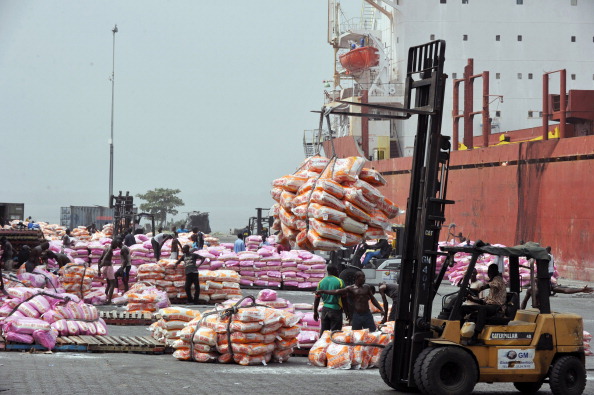Caribbean news. It is shameful that golden opportunities to produce more food in the Caribbean and significantly reduce the astronomically high annual food import bill of US.75 billion are being woefully neglected. If this misguided trend continues, the economies of many of the countries of the region will be increasingly imperilled.
At a time of very low or no economic growth, extremely high ratios of debt-to-Gross Domestic Product (GDP) and declining foreign exchange earnings in many of the 14 independent nations that comprise the Caribbean Community (CARICOM), the majority of them continue to spend huge sums on buying food outside the Caribbean.
In 2013, only four countries were exceptions to those with unsustainably high debt to GDP ratios. They were: Haiti 21.3%, Suriname 29.2%, Trinidad and Tobago 30.6%, and Bahamas 56.3%. Of the others, Jamaica 138.9 %, Grenada 115%, St Kitts-Nevis 104.9% and Antigua and Barbuda 92.9% have the highest debt-to-GDP ratio. At the lower end of the unsustainable high debt-to-GDP ratio are Guyana 63.9%, Dominica 74.95, Belize 75.5%, and St Vincent and the Grenadines 76.4% (source IMF and World Bank). It should be noted that in the case of Haiti, while its debt-to-GDP ratio is low, it has the highest rate of poverty at 77% of its population. Other countries with high levels of poverty are: Belize 41.3%, Grenada 37.7%, Guyana 36.1%, and St Vincent and the Grenadines 30.2%.
These figures alone should be strong reasons for CARICOM governments to swiftly involve the private sector and financial institutions in acting to reduce the enormous food import bill. Experts have sounded alarms repeatedly that failure to deal with the issue is harming Caribbean economies and increasing their vulnerability to prices and supply from external providers.
Jamaica is the largest importer of agricultural products from outside the region at 21% or US7.5 million of the total regional import bill. Trinidad and Tobago is the second largest importer accounting for 20% or US0 million, and Haiti is third at 19% or US2.5 million. In part, the size of the food import bill for these three countries is explained by the relatively large size of their populations in relation to the other countries. Haiti has 10.2 million people, Jamaica 2.7 million and Trinidad and Tobago 1.3 million. The reason Haiti ranks behind Jamaica and Trinidad and Tobago is its very low per capita income of US0 in 2013 – seven times lower than Jamaica’s and 19 times lower than Trinidad and Tobago’s.
But, while these three countries are the largest importers in total volume, they are not the biggest food importers on a per-head-of-population basis. Antigua and Barbuda leads the table in 2013 at US,170 followed by Barbados at US,126, Bahamas at US,106 and St Lucia at US9. On this per capita basis, Trinidad and Tobago is sixth, Jamaica twelfth and Haiti fourteenth. These figures demonstrate the pervasiveness of the problem across the region.
A review of the prevalence of undernourishment in CARICOM is revealing. For instance, in Barbados, people are over-fed on inappropriate foods to the extent that, in the measurement of people in their 30s, Barbadians now rank as No. 1 in the Caribbean of persons who are overweight or obese. Trinidad and Tobago is second, Dominica third, Jamaica fourth and St Lucia fifth. Much of this is due to the importation of processed food (now well over US.5 billion) that include homogenised composite food preparations; yeast and baking powders; stuffed pasta and fast foods.
Overweight and an increasing reliance on processed foods have contributed to medical problems such as diabetes and heart conditions. This means that the high cost of medical treatment for people, as a consequence of poor diet, has to be added to the US.75 billion annual food import bill with harsh effects on their economies.
It should be clear that CARICOM countries are doing themselves no favours by continuing the ill-advised policy of importing large quantities of food that could be produced within the region with contributions being made by all countries. Indeed, should governments of the region implement the food, nutrition and agriculture plans that they have drawn-up, not only would massive sums of foreign exchange be saved, but agriculture would make a significant contribution to GDP and economic growth and create tens of thousands of jobs across the region.
The failure to implement these plans at a time of very difficult economic circumstances is not only poor economic and financial planning and implementation, it is downright senseless – particularly as the countries could individually and collectively reduce their import bills by at least 30%, redirecting their foreign exchange for spending on job-creating and sustainable projects, and thus reducing poverty and improving health standards.
What are some of the solutions? Studies conducted by the Food and Agriculture Organisation (FAO) show that CARICOM countries could increase their production of cassava, other root crops, vegetables and meat, particularly sheep and goats. Increases in such production, which could take place in every CARICOM country, would significantly reduce importation of wheat (US$248.8 m) and corn (US$145.5 m) that, along with Food Preparations (US$251 m), constituted the three largest imports in 2011. For instance, cassava could be mixed with wheat for making bread, cakes and rotis with no discernible difference to taste and with the added advantage of a reduction of gluten. Further, a percentage of cassava could be added to corn that is used as feed in the poultry industry, thus reducing the import bill for corn and maintaining the quality of feed.
The same argument applies to meat importation valued at US$225 m. Several Caribbean countries are importing lamb from as far away as New Zealand, while the production of sheep and goat is perfectly feasible within the region to satisfy demand – and every country could be involved.
What is required is a well-organised meeting of Caribbean entrepreneurs, the Caribbean Development Bank, national development banks and visionary commercial banks with agricultural experts from each country to demonstrate the real economic opportunity that now exists if capital investment can be married to agricultural know-how. At offer is a significant portion of US$4.75 billion to be earned within the region for the benefit of the region.
The heads of Caribbean agricultural agencies, including CARDI, the Interamerican Institute for Cooperation on Agriculture and the FAO meet in Suriname in the week beginning June 10, it would be unforgivable if they ignore this opportunity that could only profit the region, its entrepreneurs and the economies as a whole.
(The writer is a Consultant, Senior Fellow at London University and former Caribbean diplomat)
Responses and previous commentaries: www.sirronaldsanders.com




